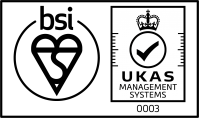The LED industry has grown exponentially since its inception, illuminating the future for LEDs. With applications expanding year by year, we are just scratching the surface of what LEDs can offer.
As 2022 draws to a close, we look ahead to what innovations and developments 2023 will bring for LEDs. In this article, we explore why the LED industry will continue to thrive.
The UK's commitment to environmental sustainability has led to increased international legislation restricting harmful chemicals in electronics. The EU RoHS Directive 2011/65/EU, revised in March 2022, now supports LED lighting by ending exemptions that allowed mercury in lamp manufacture. For instance, T5 and T8 fluorescent lamps will be banned by August 2023.
Fluorescent lighting, once popular in workplaces, has harmful side effects on people and the environment. The benefits of LED lighting are prompting businesses to switch from harmful fluorescents to sustainable LEDs.
In 2023, many workplaces will undergo significant transformations as they adopt LED lighting. Human-centric designs will play a crucial role in creating optimal work environments that enhance productivity and well-being. The demand for LEDs will extend beyond interior applications, as the outdoor lighting market continues to grow with improvements in exterior public spaces.
LEDs have been a popular choice for outdoor lighting due to minimized light pollution, improved energy efficiency, and impressive lifetimes. LEDs also reduce maintenance and associated costs. For example, Surrey implemented LED street lighting through a £19.9 million investment, replacing 89,000 lights and saving 65% on energy consumption. Similarly, Hackney invested £1.25 million to update street lights with LED lanterns, set to be completed by early 2023.
The long-term benefits of LEDs for public streetlights are becoming well-known. Their longevity and lower power consumption help reduce environmental impact, creating a greener nation. The success of these initiatives is driving momentum to convert all street lights to LEDs in 2023 and beyond.
LiFi (light fidelity) is a wireless communication technology that uses light as a power source. Unlike Wi-Fi, which uses radio signals, LiFi relies on encoded photon bursts with LEDs for data transfer. This system, combined with the Internet of Things (IoT), offers increased data share speeds and more efficient handling of data traffic.
Manufacturing facilities are predicted to invest heavily in IoT for facility control and monitoring. LiFi can connect more devices and handle increased data traffic more efficiently than Wi-Fi. As businesses invest in LiFi solutions and global ICT initiatives, 2023 should see a rise in LiFi innovations.
Natural light significantly impacts our circadian rhythms, promoting mental and physical well-being. The Colour Rendering Index (CRI) measures a light's spectrum breadth, with CRI 95 or higher resembling natural light. Blue light, for example, suppresses melatonin, affecting sleep and wakefulness.
Four aspects of artificial lighting affect health:
Human-centric setups have been successful in medical environments, such as care homes and hospitals. Patients with limited access to natural light benefit from simulated light cycles that replicate natural days.
Poor lighting designs can negatively impact mental and physical health. Innovations in LED lighting can create systems that support circadian rhythms. In 2023, we expect more lighting designs focused on promoting health and well-being.
Many businesses, councils, and industrial facilities choose LED lighting for its cost-effectiveness, longevity, and practicality. With ongoing innovations, 2023 promises to be an exciting year for the LED industry. Forge excels in manufacturing custom LED solutions, working with clients from project inception through design, prototyping, and mass production. Contact us to discuss how we can assist with your next project.


